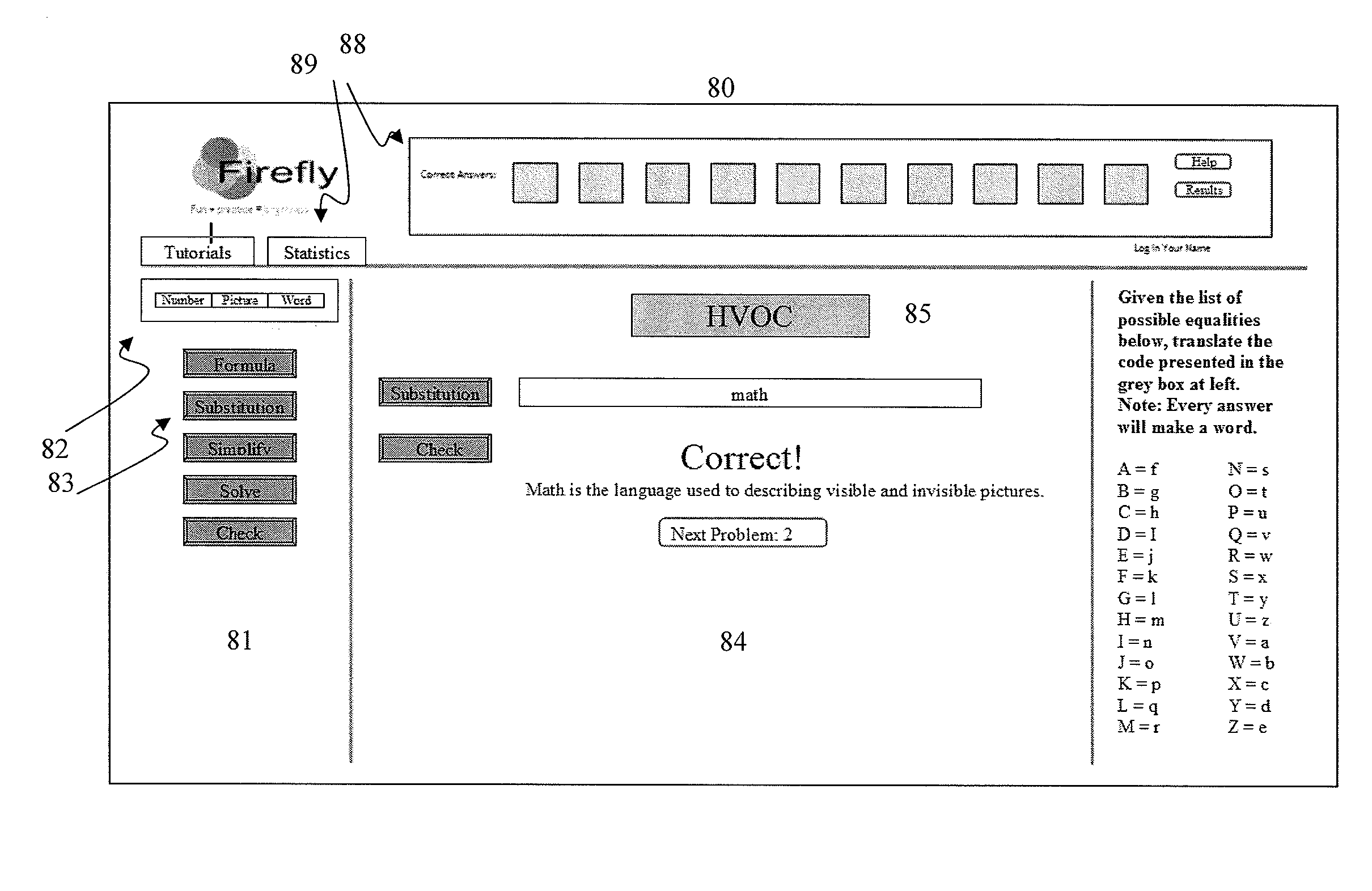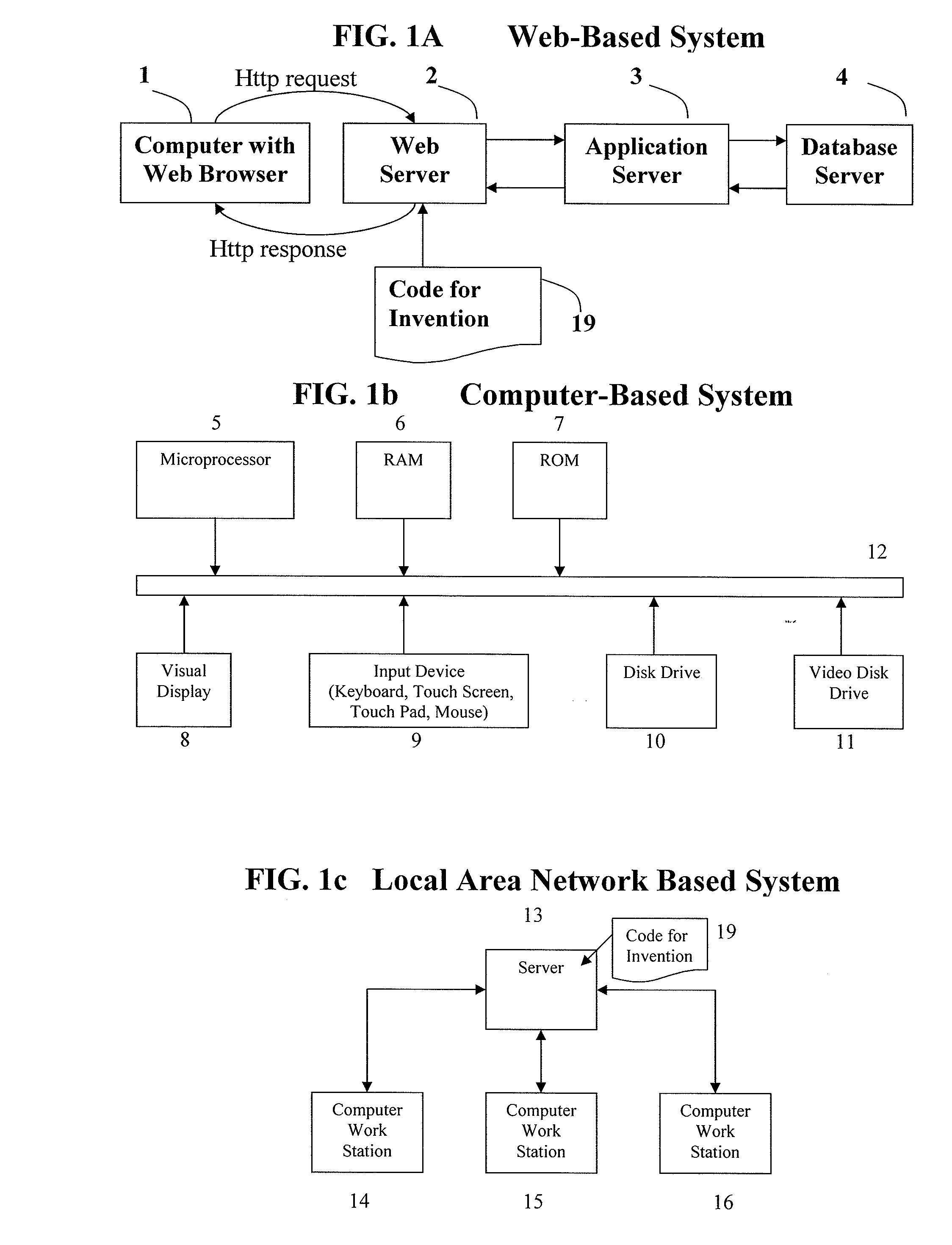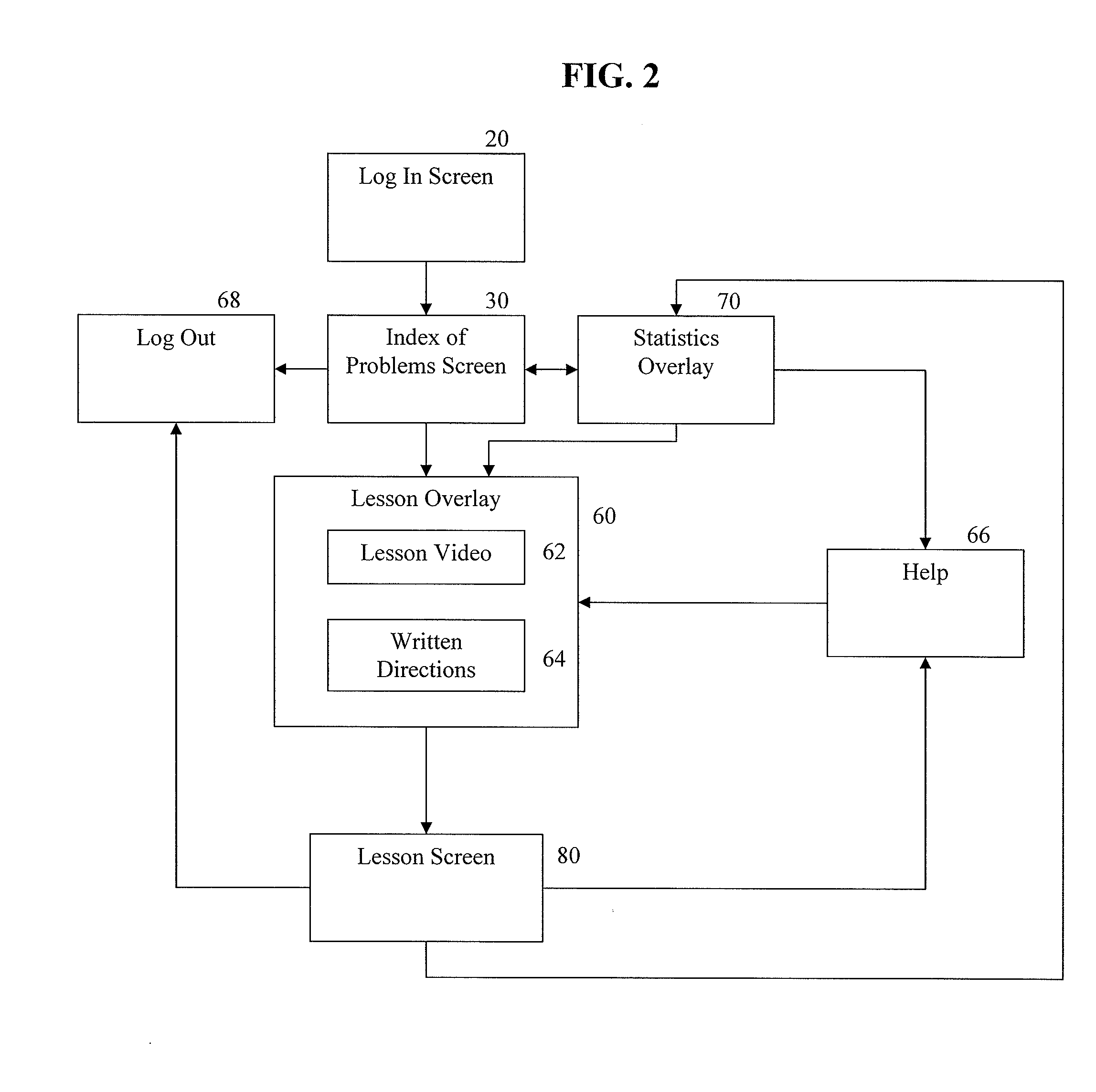Systems and Methods Using Mathematical Reasoning Blocks
a technology of system and method, applied in the field of automatic systems and methods for student instruction and teacher training, can solve the problems of inability to balance intuitive, whole-language approaches to teaching mathematics with more-traditional approaches, and the lowest performers on such standardized tests
- Summary
- Abstract
- Description
- Claims
- Application Information
AI Technical Summary
Benefits of technology
Problems solved by technology
Method used
Image
Examples
example 1
[0171]In this example of one possible embodiment, a lesson overlay appears that presents written instructions and a video explanation of the skills the user will need to complete the upcoming problem set: In this problem set the user is directed to describe a sequence of events using positive and negative numbers. Once the lesson overlay is dismissed, the first problem is presented in the problem area of the lesson screen: Tommy finds five marbles on Monday. On Tuesday he looses two marbles. Write an expression that describes these events. See FIG. 9a.
[0172]The user is given a choice of three base-level reasoning blocks. When the Number reasoning block is selected, two secondary-level reasoning blocks specific to the embodiment in this example appear in the block reasoning area—a logical reasoning block titled Add and a second logical reasoning block titled Check. See FIG. 9b.
[0173]If the user drags the Check reasoning block into the work area, the system will refuse it at this po...
example 2
[0185]This example of one possible embodiment would begin just as the last example began, with the lesson overlay appearing then (when prompted by the user) moving to the lesson itself. The same first problem as in the last example is presented in the problem area of the lesson screen: Tommy finds five marbles on Monday. On Tuesday he looses two marbles. Write an expression that describes these events. See FIG. 10a.
[0186]The difference between these two examples is evident once the user selects the Number base-level reasoning block, causing the associated secondary-level reasoning blocks for this example of an environment to display a logical reasoning block titled Subtract and a second logical reasoning block titled Check. See FIG. 10b.
[0187]After dragging and dropping the Subtraction block from the block reasoning area into the work area, FIG. 10c, the user may enter the most intuitively obvious answer to this problem by using subtraction. In this case the student does not need ...
example 3
[0201]This example of one possible embodiment begins with a lesson overlay. Once the lesson overlay is dismissed the first problem is presented in the work area of the lesson screen. In this case, 5+2·1 must be simplified. See FIG. 11a.
[0202]Here, a numeric expression is at the heart of the problem, so the user may begin by selecting the base-level button titled Number. This causes five secondary-level blocks to be displayed, one of which is the Simplify block. See FIG. 11b.
[0203]In one possible embodiment, if the Simplify block is selected, then a set of tertiary blocks may be displayed, each tertiary block indicating one of the steps necessary for simplifying an algebraic expression. In one embodiment of this invention the blocks might represent the procedures for simplifying Parentheses, Exponents, Multiplication, Division, Addition and Subtraction—the traditional PEMDAS procedures taught in most schools across the United States.
[0204]In another possible embodiment, selecting t...
PUM
 Login to View More
Login to View More Abstract
Description
Claims
Application Information
 Login to View More
Login to View More - R&D
- Intellectual Property
- Life Sciences
- Materials
- Tech Scout
- Unparalleled Data Quality
- Higher Quality Content
- 60% Fewer Hallucinations
Browse by: Latest US Patents, China's latest patents, Technical Efficacy Thesaurus, Application Domain, Technology Topic, Popular Technical Reports.
© 2025 PatSnap. All rights reserved.Legal|Privacy policy|Modern Slavery Act Transparency Statement|Sitemap|About US| Contact US: help@patsnap.com



